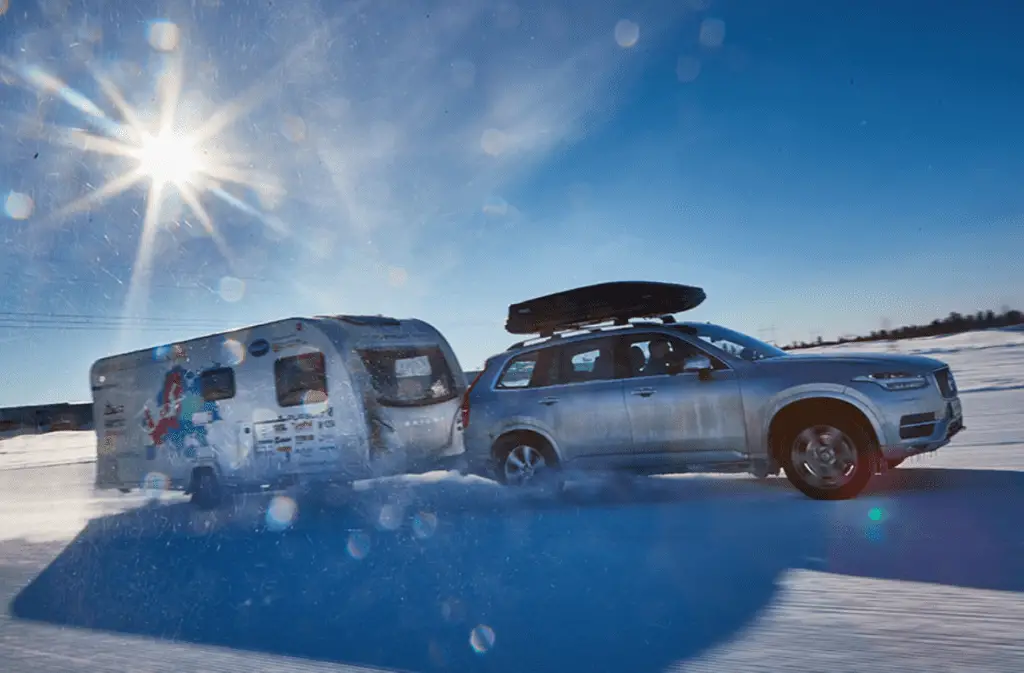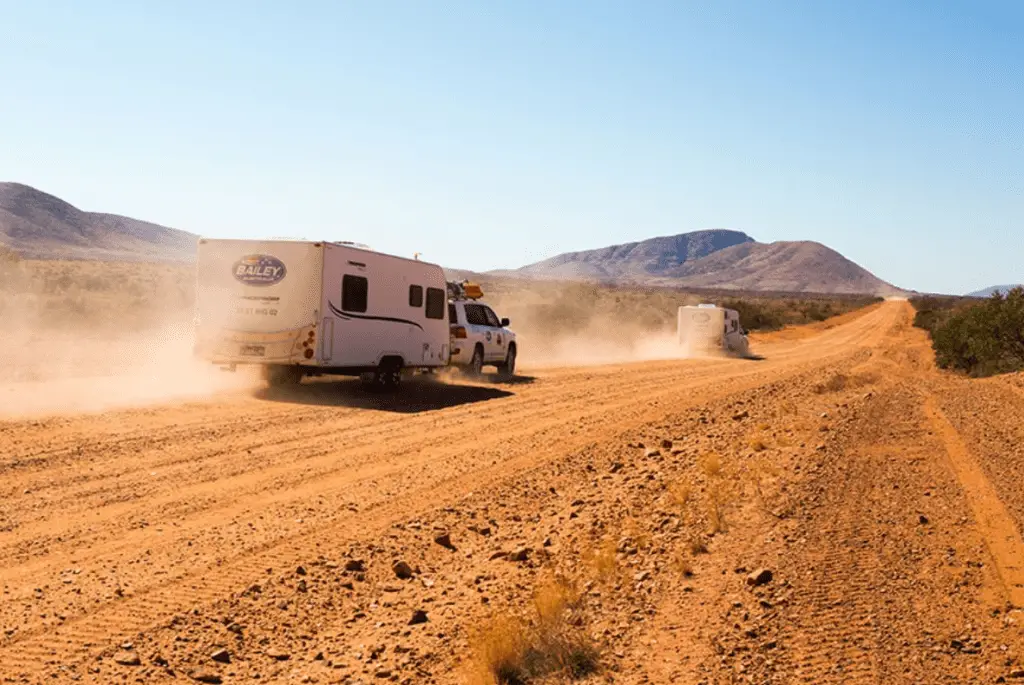Alu-Tech is an approach that Bailey has taken to improve the bodyshell construction of their caravans, which has an interlocking aluminium framework that works to clamp the body panels together, creating much stronger and robust construction. This unique approach creates a more robust caravan and has resulted in these caravans being popular since their release. Another reason behind Bailey Alu-Tech’s popularity is how these caravans were promoted when they were first introduced. To raise awareness of their new caravans, Bailey tested the strength of the Alu-Tech design and uploaded a video onto their website. In this video, they got an entire team of staff to stand on the caravan’s roof, which didn’t affect the caravan, as it safely held the weight of all these people. In addition to this, they also put a Ford Mondeo Estate on the roof to further test the caravan’s strength. Again, the caravan remained unaffected by the weight. This is why these caravans are trusted by so many.
Bailey’s Alu-Tech construction is a unique system where the individual components of the caravan’s body shell all contribute to the structure and strength of the caravan. The strength comes just from the floor and the chassis of most other caravans. The Bailey Alu-Tech construction is the first caravan in the UK to introduce this more robust caravan construction, which is why it is one of the most popular and most trusted caravan construction methods. This blog post will look into the Bailey Alu-Tech caravans in more detail and see what other caravan users think of its construction.
This blog post will cover the following:
Alu-Tech design

The feature of the Alu-Tech caravans that stands out the most is its robust design and, as a direct result of the design, its ability to hold so much more weight than the caravans before it. The design of the Bailey Alu-Tech caravans emphasises three main components: strength, stability, and lightness. I have explained these three components in more detail below:
Strength
To ensure the Alu-Tech caravans offer the most strength possible, Bailey designed these caravans to have structural support supplied by an external framework. These caravans also have a five part panel which has been significantly reduced from the older models that have a nine part panel assembly system. This allows the caravan to have more sturdy construction. In addition to the reduced number of panels, they are also thicker in the Alu-Tech models compared to older models. The Alu-Tech models have a panel of 37mm for the sides, 31mm for the ceiling, and 44mm for the floor. This is 30% thicker than older produced caravans, making the construction much stronger. The panels used in the Alu-Tech models are made from superior bead application laminating technology for a stronger and more consistent bond. These impressive caravans also have integrally bonded windows and doors that provide further structural support.
Stability
When it comes to the stability of the caravan’s structure, the Alu-Tech is incredibly impressive. Thanks to their single piece front and roof panelling, these caravans have been built to be more aerodynamic. The Alu-Tech caravan does not feature any front or rear plastic cloaking panels, which means there is less weight on the structure compared to the previously designed Bailey caravans. Not only is the construction of the Alu-Tech caravans more stable, but it is also inherently more stable on the road. While testing the Alu-Tech caravans, Bailey also found that these models helped drivers see a 10% improvement in fuel efficiency when towing, making it a more economical caravan.
Lightness
Since the Alu-Tech caravans are built to be solid and stable, many people may think it’s safe to assume the weight of these caravans will be a lot more than other Bailey caravans. However, this is not the case. In fact, it is the opposite. The Alu-Tech bodyshell is lighter by 50kg than the equivalent classic construction version. This means the Alu-Tech caravans are much lighter and easier to tow.
Alu-Tech purpose

As explained above, the Alu-Tech system uses individual components of the caravan’s body shell that all contribute to the structure and strength of the caravan, rather than only having strength from the floor and the chassis. The purpose of the Alu-Tech is to offer a caravan with more strength, stability, and lightness, but where did the idea behind creating such a caravan come from?
The design of the Bailey’s Alu-Tech first came to be in the 1980s, when the first sandwich construction body shell panels became widely used in leisure vehicle production. This was the beginning of a new direction for caravan and motorhome technology. With this advancement in technology, the designers at Bailey’s wanted to go one step ahead and find a better way to make the caravan even stronger and more stable. They wanted to create a construction system that naturally increased warmth and dryness and offered an increase in waterproofing while also making the caravan more durable and robust. Another goal for the Alu-Tech caravans was a sturdy and aerodynamic design without the extra weight of adding these features.
Opinions on Bailey Alu-Tech

Although the Bailey Alu-Tech caravans have been designed to be much more robust and more stable than other caravans, some caravan users are not entirely convinced by Bailey’s claims about the Alu-Tech design. I posted on the Practical Caravan forum to see what caravanners thought about the Alu-Tech design. Here are some of the responses I got.
User ‘Buckman’ commented that many UK caravans are as strong as the Bailey Alu-Tech caravans and that Alu-Tech was just a way for Bailey to market their new product. The user says:
“I would think that the majority of caravans made in the UK could have a car placed on the roof without issues as the load is spread and the actual load is on top of the walls of the caravans. Good marketing by Bailey, if you believe it.”
Some other forum users also follow a similar opinion to this. User ‘otherclive’ says:
“I doubt they have any comparative videos showing an Alutech versus another make of equivalent weight distribution and aluminium sides. Gains if any, I suspect it would be marginal and difficult to substantiate. Marketing hype methinks.”
User ‘Raywood’ also added to this and said:
“I cannot see where they get that from. To me, the construction method is a plus in the fight against water ingress damage and may add strength to the frame, but how it can improve stability is beyond me. Stability is down to good overall design.”
After reading through these comments on the forums and getting a better understanding of what caravan users think about the Alu-Tech design, it’s clear that the people who are reluctant to believe everything that Bailey says about Alu-Tech are those who think it sounds too good to be true. This may come down to their well-known video that shows multiple people climbing up to the roof to prove the caravan’s strength. In this video, they also place a Mondeo Estate on the roof to further test the caravan’s strength. This may make some caravan users think that the Alu-Tech system is nothing more than a marketing technique.


